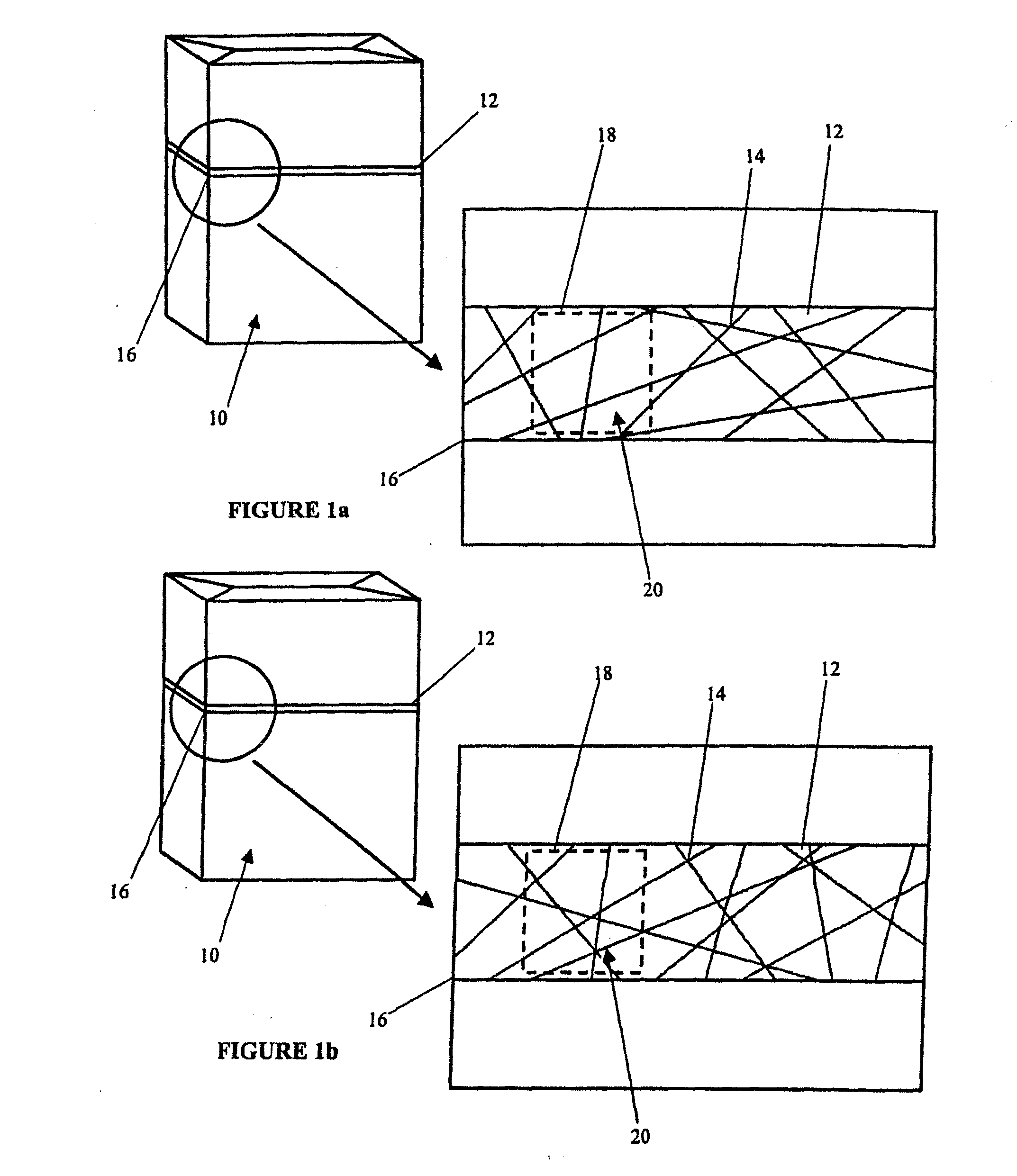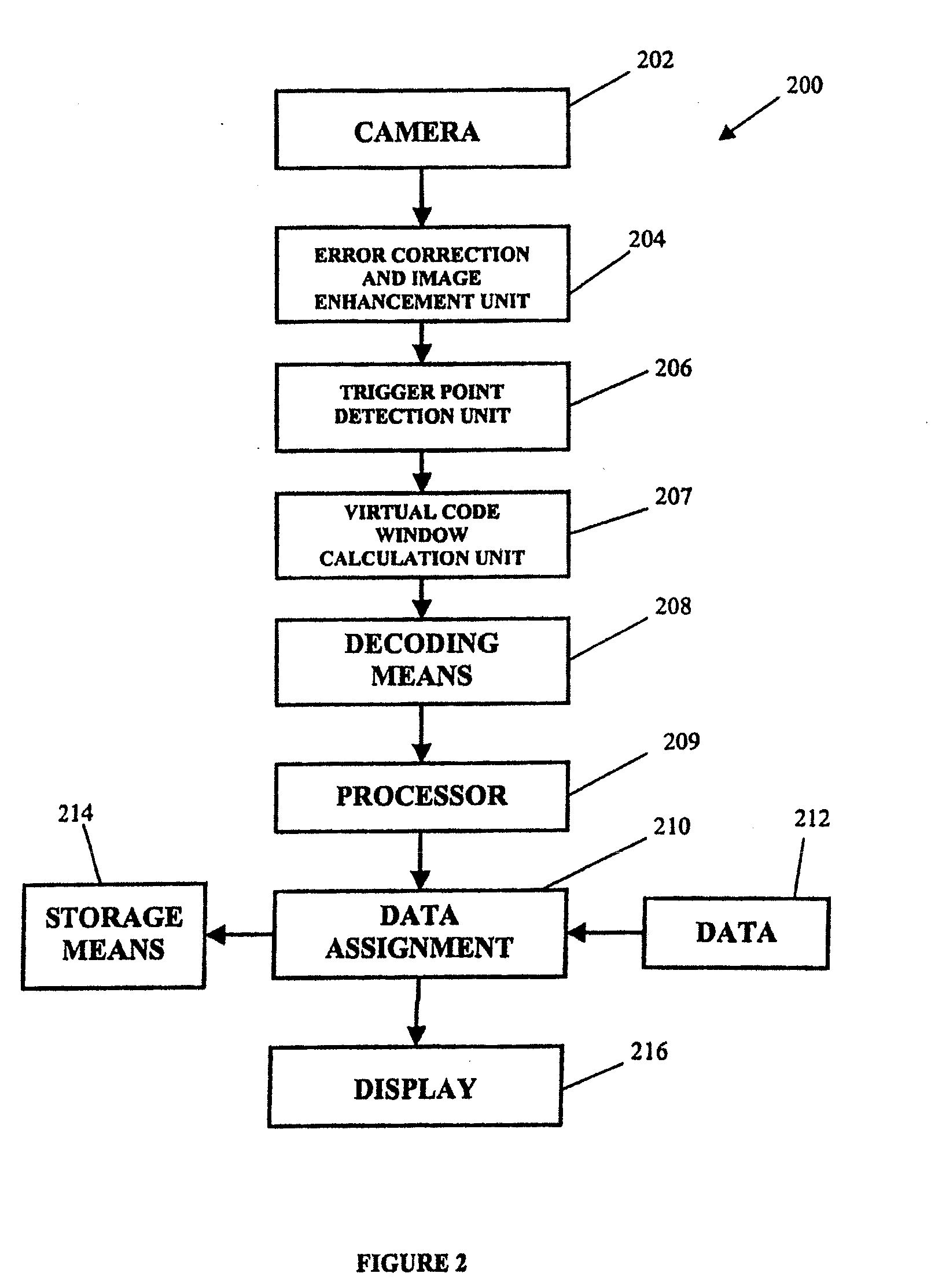Virtual Code Window
- Summary
- Abstract
- Description
- Claims
- Application Information
AI Technical Summary
Problems solved by technology
Method used
Image
Examples
second embodiment
[0043]FIG. 4 schematically shows the invention. An article 30, in the form of an identification card, has a plurality of straight lines 34 printed over its surface 32 which are arranged at different angles such that at least some of the lines intersect each other. The pattern of coding lines 34 over the surface 32 is fixed for each of a plurality of articles 30 and therefore every article in a series has the same pattern of lines on its surface. Additionally, on the surface 32 of the card 30 is printed a trigger point 36 which in this example is a non-symmetrical mark and a machine readable code 44. The machine readable code may be an alphanumeric code or a barcode, for example. If the machine readable code is a barcode it could be almost any of the currently known codes referred to collectively as “barcodes” and including, but not limited to, such codes as: Data Matrix, PDF-417, Micro-PDF-417, QR Code, MaxiCode, Codabar, RSS, and linear barcodes.
[0044]The coding lines 34, trigger p...
first embodiment
[0046]Referring to FIG. 5, an apparatus 200 for reading the coding lines 34 and assigning data thereto is schematically shown. This is substantially the same as the apparatus shown in FIG. 2 except there is a barcode decoder 205. The method for assigning data to the code 40 is the same as for the first embodiment except the coordinates of the virtual code window 38 are determined by decoding the barcode 44 on the article as opposed to the co-ordinates being pre-defined in the machine.
[0047]FIG. 6 schematically shows a hand-held reading apparatus 300 for reading the code 40 on an article 30. This is substantially the same as the apparatus shown in FIG. 3 except there is a barcode decoder 305. The method for reading the code 40 is substantially the same as for the first embodiment except scanning the barcode 44 and decoding it determines the co-ordinates of the virtual code window 38 relative to the trigger point 36.
[0048]FIG. 7 illustrates a third embodiment of the invention. This is...
PUM
 Login to View More
Login to View More Abstract
Description
Claims
Application Information
 Login to View More
Login to View More - R&D
- Intellectual Property
- Life Sciences
- Materials
- Tech Scout
- Unparalleled Data Quality
- Higher Quality Content
- 60% Fewer Hallucinations
Browse by: Latest US Patents, China's latest patents, Technical Efficacy Thesaurus, Application Domain, Technology Topic, Popular Technical Reports.
© 2025 PatSnap. All rights reserved.Legal|Privacy policy|Modern Slavery Act Transparency Statement|Sitemap|About US| Contact US: help@patsnap.com



